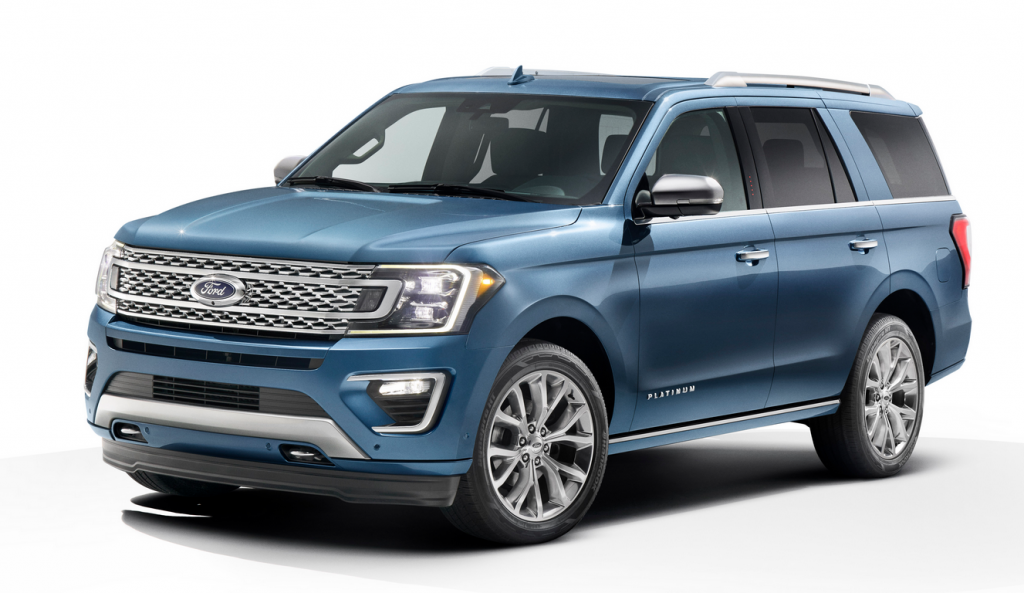
A 3.5-liter EcoBoost V6 engine with a class-exclusive 10-speed automatic transmission and standard auto start/stop technology is the lone powertrain. A Terrain Management System allows drivers to choose from seven drive modes that alter powertrain settings: normal, sport, tow/haul, eco, grass/gravel/snow, sand, and mud/rut. Ford hasn’t listed horsepower or fuel-economy numbers, but the current Expedition’s EcoBoost V6 makes 365 hp—we’d guess the 2018’s engine will be in the same ballpark. Ford also hasn’t yet listed towing numbers, but expects the new Expedition to offer class-leading towing capacity.
As before, the Expedition offers seating for up to eight passengers. The second-row seats tilt and slide forward even with a child seat installed, for easy third-row access. The third-row seatbacks recline, and Ford says third-row legroom has been improved. The rear cargo area can accommodate a 4×8 sheet of plywood when the second and third-row seats are folded.
Available features include active park assist, Pro Trailer Backup Assist, 360-degree surround-view camera, lane-keep assist, adaptive cruise control with stop-and-go functionality, wireless device charging, a WiFi hotspot, dual-screen rear-seat entertainment system, Ford’s SYNC 3 infotainment system (with Apple CarPlay and Android Auto functionality), a hands-free liftgate, and a “Panoramic Vista Roof” sunroof that spans two rows of seats.
CG Says:
In recent years, traditional full-size, body-on-frame SUVs have largely been pushed to the sidelines by smaller, more-fuel-efficient crossover SUVs. However, there is still a market for plus-size SUVs that can seat eight people (with room left over for those passengers’ gear), handle a variety of off-road driving conditions, and tow big stuff like a boat or camper trailer. With the 2018 Expedition, Ford has a vehicle that can handle all those jobs—all while offering a competitive selection of the latest comfort, safety, and technology features.